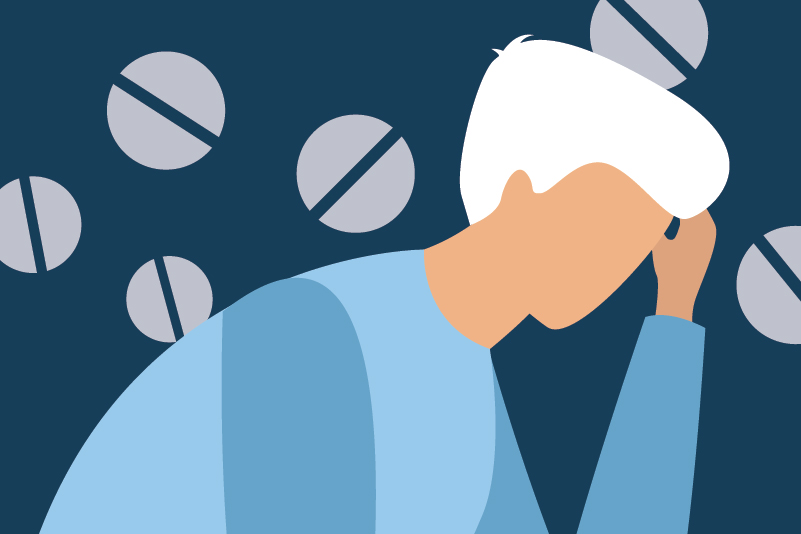#222 Does this patient taking prescription opioids have opioid use disorder?

Reading Tools for Practice Article can earn you MainPro+ Credits
Join NowAlready a CFPCLearn Member? Log in
- POMI, 6-question clinician-administered checklist, >2 points indicates potential OUD (Appendix).15
- One cohort study (74 patients prescribed oxycodone for pain):
- Area-Under-the-Curve (AUC)=0.89 (high predictive ability).
- By comparison, AUC for most cardiovascular calculators=~0.75-0.80 (closer to 1.0 is best).17
- Positive Likelihood Ratio=10.3 (large help ruling-in):
- Specificity=0.92.
- Negative Likelihood Ratio=0.20 (moderate help ruling-out):
- Sensitivity=0.82.
- Area-Under-the-Curve (AUC)=0.89 (high predictive ability).
- One cohort study (74 patients prescribed oxycodone for pain):
- COMM is a 40-point scale with 17 questions, greater or equal to 13-points suggest potential OUD:16
- One cohort study (238 patients prescribed an opioid in ≤12 months):
- AUC=0.84.
- Positive Likelihood Ratio: 3.35 (small help ruling-in):
- Specificity=0.77.
- Negative Likelihood Ratio: 0.30 (small-moderate help ruling-out):
- Sensitivity=0.77.
- Length of the tool could limit practical application.
- One cohort study (238 patients prescribed an opioid in ≤12 months):
- Limitations: One small validation study for each tool.
- Other tools were long (examples SOAPP/SOAPP-R),18,19 had weak predictive ability (example PDUQp),20,21 or were not studied in an OUD population (CAGE-AID).22
- Recent Canadian guidelines reference DSM-5 criteria for diagnosis of OUD.23-25
- DSM IV/5 criteria for OUD may be met by patients with chronic pain on opioids (with tolerance, withdrawal, unsuccessful efforts to cut down) but do not misuse the medication. We likely lack a true diagnostic standard for OUD in these patients.26
- There is no evidence to support a population-wide screening program. Case-finding in patients using prescription opioids with POMI may help management.














